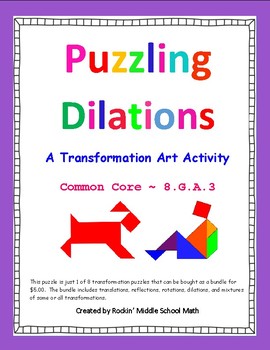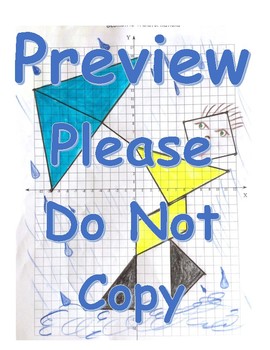Dilations puzzle - Transformation Art activity - CCSS 8.G.A.3
- PDF
What educators are saying
Description
This is a high interest, interactive activity that will allow you to easily see if your students have mastered dilations on a coordinate plane. Students must use the given pre-image points, perform the stated dilations, and then plot the new image points to create a figure which they can then color and decorate.
This can be used as an in class or home project or an assessment.
Common Core 8.G.A.3 - Describe the effect of dilations, translations, rotations, and reflections on two-dimensional figures using coordinates.
This puzzle can be purchased as part of bundle that includes 7 different puzzles including translations, reflections, rotations, dilations and mixtures of some or all transformations at:
https://www.teacherspayteachers.com/Product/Transformations-Bundle-Puzzle-Art-Common-Core-8GA3-1934632
Created by Rockin’ Middle School Math
https://www.teacherspayteachers.com/Store/Rockin-Middle-School-Math





